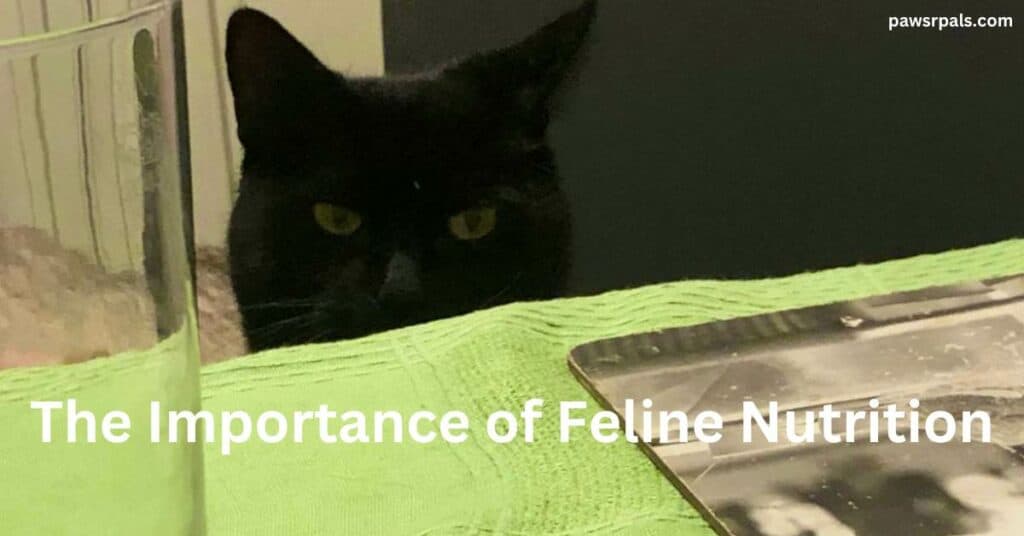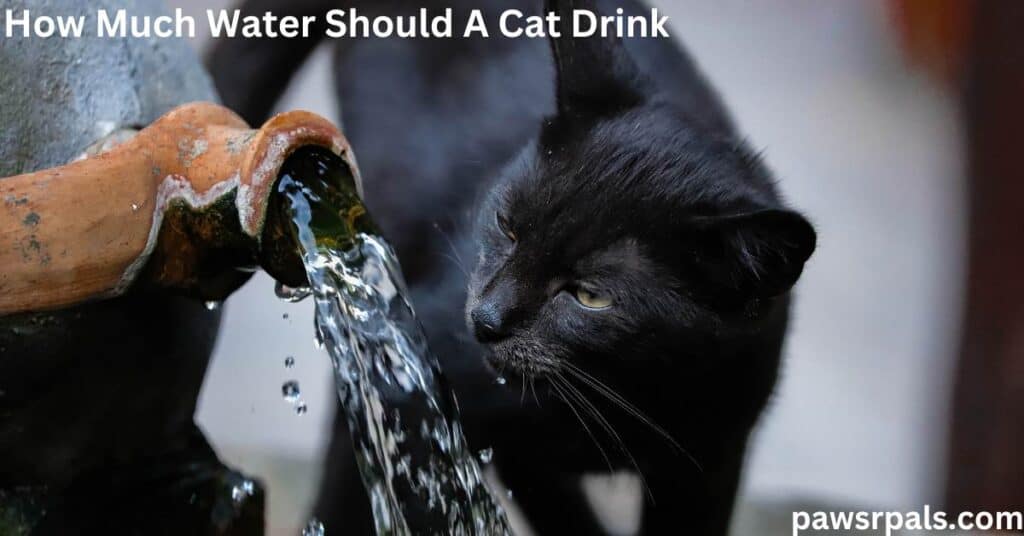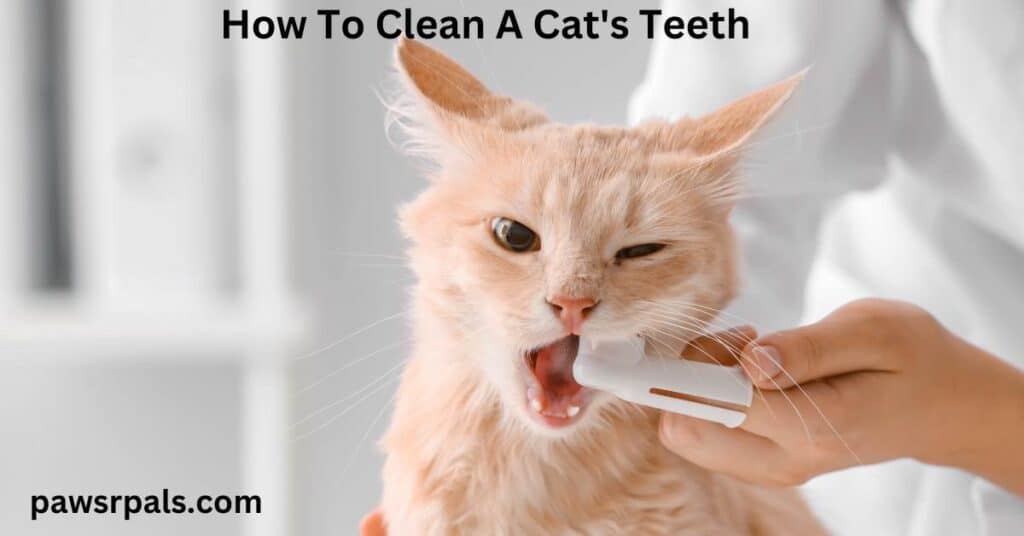Cats are obligate carnivores (true carnivores), which means they are physiologically built to survive on a meat-based diet. If cats don’t get enough animal protein in their diet, they will break down their body’s muscles and organs to survive.

A nutrient-rich diet ensures that cats function optimally and their skin and coats are healthy; even with a medical condition, a nutrient-rich diet can benefit the cat by providing the nutrients its body needs to heal and recover. Conversely, a poor diet means the cat’s body will struggle to function properly, and the chances of healing and recovery are significantly reduced.
The Feline Body
Cats’ bodies are designed to process protein and fats in meat quickly. In every step, the cat’s body will ensure it gets what it needs from the meat. Cats are amazing, and have:
- 30 Teeth to tear, chew, and grind the meat and bones.
- The sharp papillae on the tongue help rip the flesh of the meat.
- The saliva has a high level of enzymes to help break down the proteins carrying the food through the oesophagus to the stomach.
- The stomach has a strong acid to aid digestion further and kill bacteria and pathogens before the small intestine absorbs the nutrients.
- The large intestine absorbs the water and other nutrients left by the small intestine.
- The pancreas and liver will produce digestive enzymes to break down the food further.
- And the waste is deposited in the litter box!
- The kidneys will filter toxins from the blood.
- The liver also detoxifies the blood and helps regulate blood sugar, creating bile.
- The bile assists in breaking down fats.
- The gall bladder stores the bile and secretes it into the intestines.
In the wild, cats eat small rodents, mammals, lizards, and birds (as well as their bones).
Providing the cat with a diet as close as possible to its natural diet, which is high in animal protein and low in carbohydrates, provides optimal nutrients for keeping the cat healthy.
Commercial Cat Food
Unfortunately, many commercial cat foods do not offer this and include additives, preservatives, and colouring, which are detrimental to the cat. Understanding the ingredient label is essential to choosing a good food for the cat, and supplementing raw meat and poultry into the diet will also help. Small bite-sized pieces of meat are easier for the cat to eat and digest.
Cat food should be stored in a cool (>47 degrees C will destroy enzymes in the food), dry area in a sealed container to stop mould or pests polluting the food.
Cats should never have milk (most cats are lactose intolerant when they are adults), grapes/raisins/currants, chives, onions, garlic, xylitol, alcohol, or anything caffeinated.
Malnutrition in Cats
Malnutrition in cats results in:
- weight loss
- lack of energy
- poor bone, teeth, skin, and coat health
Malnutrition in cats can be caused by a poor diet (poor quality food), digestive issues (including parasites), or liver disease. A veterinary checkup and investigation will determine the proper course of action. In addition to medication, it may be necessary to change (improve) the diet and include supplements.
Not all poor diets cause digestive issues; however, a poor diet and lack of nutrition can cause diarrhoea, gas, and pain by irritating the stomach.
Processed Food issues for Cats
Inflammation can be caused by processed foods (in humans and animals) because they are repeatedly heated, creating chemical reactions in the food (ALEs Advanced Lipoxidation End products – the more oils are heated, the more ALEs are produced).
Foods containing ALEs creates oxidative stress in the body (inflammation), such as:
- Gastroenteritis (inflammation of the stomach and intestines)
- Colitis (inflammation of the large intestine)
- Irritable Bowel Syndrome (inflammation of the bowel)
As well as ALEs, AGEs (Advanced Glycation End products) are made when proteins and carbohydrates are heated together; these are also linked to some health conditions.
Hydration Requirements for Cats

Cats require a lot of moisture in the diet to prevent/reduce the risk of kidney disease – a cat on a dry food diet will need plenty of fresh water readily available to avoid kidney disease.
Feline Lower Urinary Tract Disease (FLUTD – several conditions can cause FLUTD – treatment will depend on the cause, such as stones or crystals in the urine) can cause:
- frequent urination
- straining to urinate
- painful urination (resulting in crying)
- urinating outside the litter box
- lack of appetite
- excessive grooming of the genital area
- blood in the urine
A urinary diet usually switches from dry food to wet food (raw or canned) to increase fluid intake, and a high-protein diet will help bring the urine pH to between 5.9 and 6.3 to prevent crystals from forming in the urine.
Pancreatitis in Cats
Pancreatitis is an inflammation or infection of the pancreas – infections, disease, physical trauma, or dehydration can cause this. Pancreatitis may cause a decrease in appetite; however, the cat must eat small amounts of food regularly and avoid processed foods that already cause inflammation – homemade foods with natural ingredients or raw food may be better.
Weight Issues in Cats
Obesity and diabetes are on the rise in Western society, not only in humans but also in our pets (dogs and cats). A healthy diet can reduce the risk of obesity and diabetes by ensuring the cat stays healthy and has the energy to exercise.
Malabsorption in Cats
Malabsorption encompasses several conditions that hinder a cat from absorbing nutrients from its food in the small or large intestine. EPI (Exocrine pancreatic insufficiency), bowel cancer and allergies/food intolerances causing inflammation, gut wall damage, Eosinophilic enteritis (white blood cell imbalance on the bowel wall), overactive thyroid, and infections (worms, giardia, cryptosporidia, and campylobacter), also prevent complete nutrient absorption for cats.
The symptoms of malabsorption include;
- Weight loss
- increased appetite
- vomiting and/or diarrhoea
- dullness and depression
- poor coat condition
- anorexia
- gas
Heart Disease in Cats
A common heart disease issue in cats is adult onset hypertrophic cardiomyopathy; this is where the heart thickens and enlarges, causing:
- weight loss
- poor appetite
- lethargy
- inactivity or difficulty with exercising
- regularly elevated heart rate
- shortness of breath or difficulty breathing
- increased breathing rate and increased effort required to breathe
- fainting
- sudden hind leg paralysis
Unfortunately, the symptoms don’t often show up until the later stages of the disease. Reducing sodium levels and introducing taurine supplements (an amino acid that helps heart function) into the diet may be suggested by the vet.
Dental Hygiene is for Cats Too

Cats on a dry food diet are more prone to periodontal disease, leading to teeth loss and gum disease, because dry food can get stuck and lead to plaque buildup. Regular brushing of the cat’s teeth will reduce the risk of plaque buildup and gum disease. If your cat is like mine and doesn’t like getting his teeth brushed, there are cat dental treats and chew toys to help clean their teeth.
Last Word in Cat Nutrition
Finding a good commercial cat food can be tricky – multinational companies like to make the ingredients as complex as possible. However, you can still keep your cat healthy and use commercial cat food – knowing what to look for helps.
A good rule of thumb is looking for a short list of natural ingredients. The longer the ingredient list, the unhealthier the food is! The food shouldn’t have extra additives or colouring either.
My cat, Pickles, is almost 13 years old (2024), and he has always been on dry food – he is healthy and active, and his teeth are still good. Our old cat, Jellytots, was in his 20s when he died and was on the same food as our current cat. Both cats would get occasional treats of tuna in spring water, chicken, and beef. We use a medium-cost kibble (Aatu 20/80), but the extra on the food saves on vet bills! So it balances out!
I hope you enjoyed this article. You can find more articles here:
How Much Water Should A Cat Drink

Leave a Reply